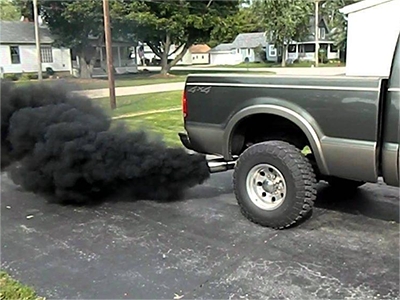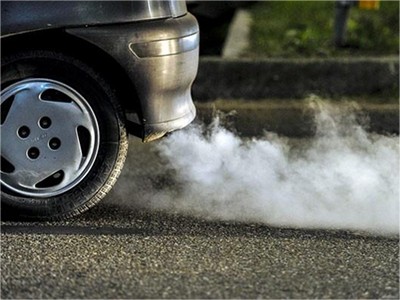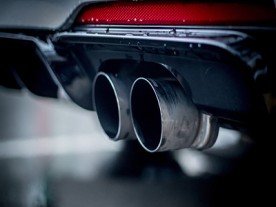Using Exhaust to Diagnose Your Vehicle
Your vehicle’s exhaust can tell you many different things about the way your engine is running. Though it is not the be-all, end-all diagnostic tool, it can point you in the right direction, including the ability to tell if the problem is a head gasket, a problem with the ignition, or a problem with the fuel delivery system. Though you may be able to tell that something is wrong with the fuel system, it will most likely be a sensor or another part of the system rather than the electric fuel pump.
White Smoke
If you notice white smoke coming out of the exhaust and it’s not condensation from early morning start-up, you may notice that your engine is also running warm or even overheating. This is a good indication that you have a broken head gasket on the exhaust side or a cracked head on an exhaust port. The exhaust may smell sweet or have a distinctive antifreeze odor.

Blue Smoke
Exhaust with a bluish tint means you have a problem with the oil getting past the rings. It is commonly referred to as blow-by. You could also have a problem with the valve seals leaking oil back into the cylinders. If you have either of these problems, you can rebuild the top half (head) or the bottom half of the engine block, but because of wear and tear – and because vehicles with these problems generally have tons of miles – it’s better to just rebuild or replace the entire engine. The exhaust usually smells like burnt oil.
Black Smoke
If you have black smoke coming out of the exhaust you could have a problem with the ignition or fuel delivery system. All newer vehicles use sensors – some communicate with the computer (ECM/PCM) and some take instructions from the computer. Most of the sensors are for emissions control, which means they control or sense engine variables. Those that sense variables feed the computer information so that the computer may instruct other sensors to make adjustments.
For example, the oxygen sensor senses how much-unburned gas – or oxygen – is going through the catalytic converter. The exhaust gas recirculation valve removes some of the unburned oxygen and recycles it by putting it into the cylinders as part of the air-to-fuel mixture. It also helps cool the cylinders.
If a vehicle is equipped with a MAP or MAF sensor and that sensor malfunctions, you will most likely see black smoke coming out of the exhaust. The vehicle will also run poorly.
If something in the ignition system malfunctions, you could also see black smoke coming from the exhaust depending on which part of the ignition system failed and how hard it failed.
Other Diagnoses
If your vehicle feels like it is running rough, feel the exhaust. If it doesn’t feel even, you may have an ignition or fuel system delivery problem. An engine misfire is usually caused by something wrong in the ignition, such as a bad plug, bad plug wire, or coil; or it could be a problem with the fuel injection.













